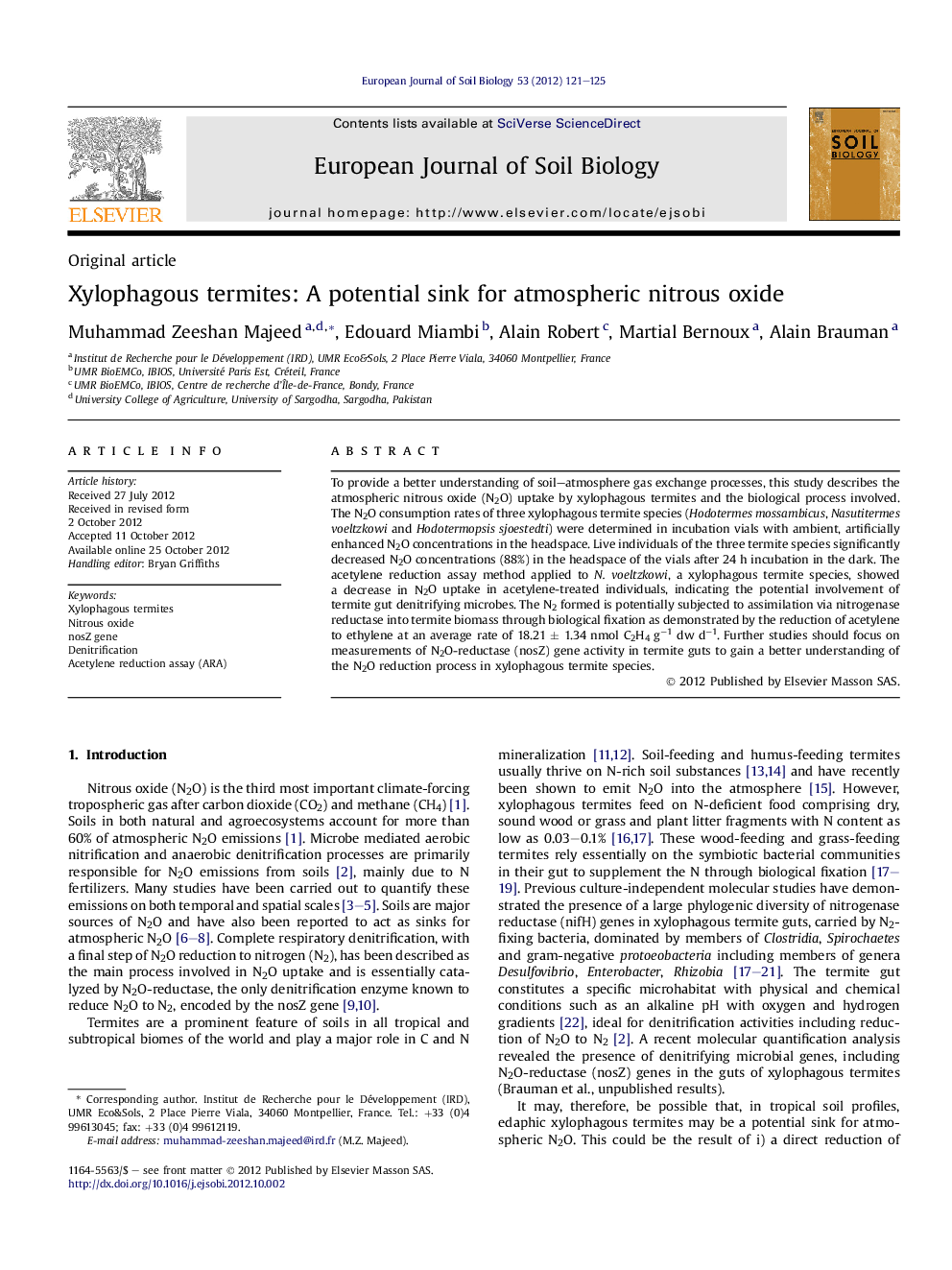| Article ID | Journal | Published Year | Pages | File Type |
|---|---|---|---|---|
| 4391997 | European Journal of Soil Biology | 2012 | 5 Pages |
To provide a better understanding of soil–atmosphere gas exchange processes, this study describes the atmospheric nitrous oxide (N2O) uptake by xylophagous termites and the biological process involved. The N2O consumption rates of three xylophagous termite species (Hodotermes mossambicus, Nasutitermes voeltzkowi and Hodotermopsis sjoestedti) were determined in incubation vials with ambient, artificially enhanced N2O concentrations in the headspace. Live individuals of the three termite species significantly decreased N2O concentrations (88%) in the headspace of the vials after 24 h incubation in the dark. The acetylene reduction assay method applied to N. voeltzkowi, a xylophagous termite species, showed a decrease in N2O uptake in acetylene-treated individuals, indicating the potential involvement of termite gut denitrifying microbes. The N2 formed is potentially subjected to assimilation via nitrogenase reductase into termite biomass through biological fixation as demonstrated by the reduction of acetylene to ethylene at an average rate of 18.21 ± 1.34 nmol C2H4 g−1 dw d−1. Further studies should focus on measurements of N2O-reductase (nosZ) gene activity in termite guts to gain a better understanding of the N2O reduction process in xylophagous termite species.
